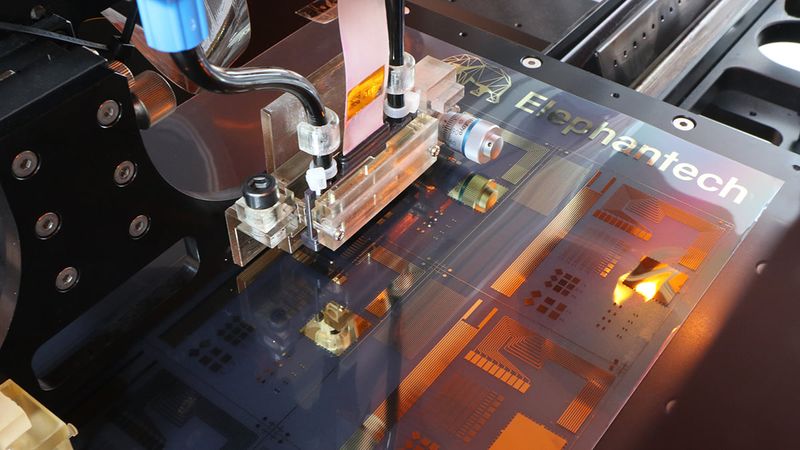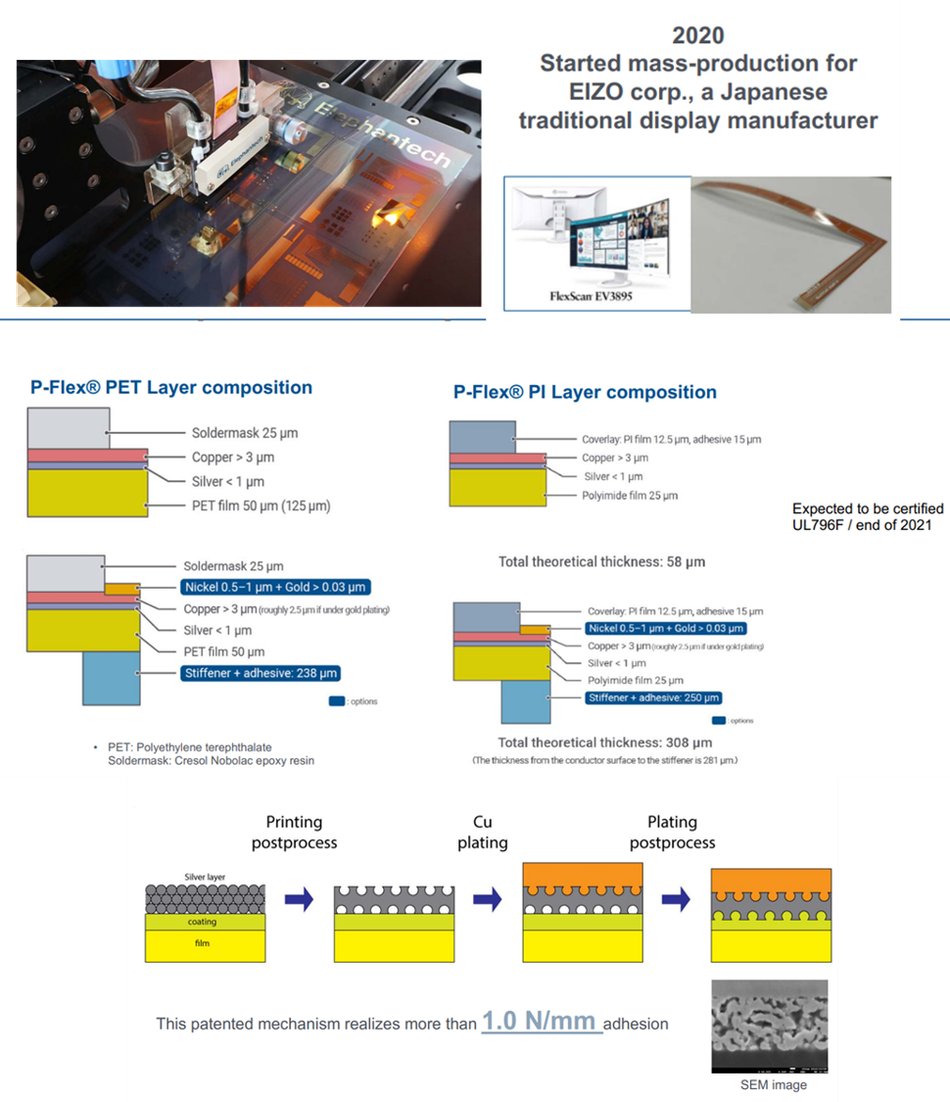Additively manufactured FPCBs with bulk-like conductivity and soldering?
Here, the additive nature of the process means that the production process is environmentally friendlier and does not involve etching chemicals. Furthermore, the digital nature of the patterning (inkjet printing) means that designs can be changed faster.

Elepahntech (Japan) has spent many tens of millions of dollars developing a technology based on inkjet printing (IJP) and plating to additively manufacture flexible PCBs (FPCBs) on PI as well as PET layers. The process is shown below.
Here, the additive nature of the process means that the production process is environmentally friendlier and does not involve etching chemicals. Furthermore, the digital nature of the patterning (inkjet printing) means that designs can be changed faster.
Here, inkjet printing is used to first print a thin silver nanoparticle track on the PET or PI substrate. Thi seed layer- which must adhere well to the substrate- is then thickened by copper (Cu) plating.
This hybrid approach ensures that (a) bulk-level conductivity similar to PCBs is achieved and (b) soldering can be deployed without the challenges faced by conductive inks. These are two important points enabling the technology to be positioned as an alternative to etched FPCBs without performance compromise and as a drop-in replacement.
The linewidth is currently limited by the resolution of inkjet printing. The L/S (linewidth over spacing) is now around 200um/200um. With laser scribing, this can be further reduced to 100/100um today. In the future, the development target is an L/S of 20/20. Furthermore, the technology currently is applied only on flat surfaces. In the future, however, the seed layer could be applied to a 3D layer, enabling 3D metallization too.
The images below are a collation from the talk that Elephantech gave in March 2022 at a TechBlick (www.TechBlick.com) conference.
